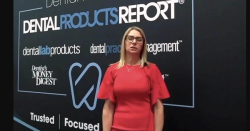- About Us
- Advertise
- Editorial
- Contact Us
- Terms and Conditions
- Privacy Policy
- Do Not Sell My Personal Information
© 2025 MJH Life Sciences™ and Dental Products Report. All rights reserved.
Major Trends Shaping the Global Oral Healthcare Market
In the first in a series of articles from Catapult Crown on “Demystifying Dental Investments,” we address a comprehensive range of topics that will help you make the right decision when it comes to making your investment.
Amidst our daily routine of appointments, chairside conversations and patient care, it's easy to forget that behind the scenes lies a huge industry that extends far beyond the dental chair. From the ever-changing front of technological advancements to the strategic collaborations shaping the industry, a vast market machinery hums, driven by innovation, consumer demand, and a global network of professionals and products.
The huge and lucrative global oral healthcare market of almost $40 billion, offers a series of opportunities to those who know this industry the best: dentists and oral healthcare practitioners. Being able to tap into even a small fraction of that market is an exciting prospect but, we might be wondering, where do we even begin?
Before being able to leverage the market potential, and as successful dentists become successful investors, there are several key things to consider that can help us highlight the best market opportunities. In this
article series from Catapult Crown on “Demystifying Dental Investments” we will be addressing a comprehensive range of topics that will help you make the right decision when it comes to making your investment.
In this article—the first in a series—we will be looking at major trends shaping the global oral healthcare market. Our financial team at Catapult Crown has been working with and investing in start-ups for over 20 years, and their mantra is that you either know the future or blow the future. Those companies whose frameworks harmonize with the future market trends invariably emerge as frontrunners. And as investors, being able to have as much clarity as possible about this envisioned future, puts us leagues ahead of those focusing on the present. So where is the oral health care market going? What is the future of dentistry?
The Geography of the Future
While the United States and Europe have dominated the oral health care scene for several decades, the Asia-Pacific region is the fastest-growing market for oral care and is set to grow to almost $30 billion by 2030.1 This is due to several factors such as increasing population size, rising disposable incomes and an increased awareness of the importance of oral health. Additional significant factors include a surge in dental tourism, particularly in India, and the growing utilization of online appointment systems and mobile applications, significantly simplifying the process for patients to schedule appointments.1 Companies that have begun to expand into the Asia-Pacific market usually are those, in our view, that are headed in the right direction.
The Products of the Future
An increased concern for environmental sustainability, as evidenced by the growing adoption of eco-friendly practices, has led to a huge demand for organic oral healthcare products.2
This includes organic toothpaste, toothbrushes, and dental floss which are perceived as healthier and more sustainable options than traditional products. Consequently, companies that neglect to address these concerns run the risk of losing market share to competitors who prioritize sustainability.2
The Technology of the Future
Although in a future article we will take a deep dive into new and upcoming dental technologies, here it is worth noting 3 major advancements that are set to change the face of dentistry:
1) Teledentistry: During the COVID-19 pandemic when numerous dental practices worldwide were shut down, the demand for teledentistry—the
delivery of dental care, advice, and treatment remotely by utilizing telecommunication technology to avoid direct personal contact with patients3—surged. This trend continues to grow as less invasive care, unrestricted by time or location, becomes increasingly available. However, several factors continue to make both dentists and patients
hesitant to embrace teledentistry, such as the fear of incorrect diagnosis during a remote "visit" and the challenges associated with using inaccurate and difficult-to-navigate software.4 Teledentistry technologies that effectively address these concerns have the potential to establish remote care as a more standardized aspect of global oral heath care.
2) Intraoral scanners: Although intraoral scanners have been around for a while and are widespread in clinical dental practice5, recent technological advancements have led to the production of far more accurate and cost-effective devices. For several decades the challenge has been to receive an accurate subgingival finish line along with the emergence profile in a simple and easy way to obtain a full and accurate 3D model of the prepared teeth. Scanners that can solve this issue and provide accurate cost-effective intraoral scanners have huge potential to change this market.
3) Staffing Solutions: Dental offices suffer from high turnover and unreliable staff due to a fragmented industry that's about 50% temp or part-timers. Aimlessly scrolling through online job boards or calling staffing agencies wastes countless hours of practices’ time and candidate no-show rates are at an all-time high.6 New online and application-based staffing solutions have huge potential to solve these issues which, in our view, remains one of the outstanding problems affecting practice efficiency.
Understanding and capitalizing on these trends is pivotal for dental professionals and investors seeking to thrive in the ever-evolving global oral healthcare market. Stay tuned for our forthcoming articles as we explore more insights into the world of dental investments, providing valuable insights for making informed investment decisions.



